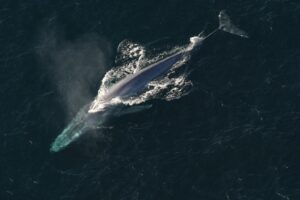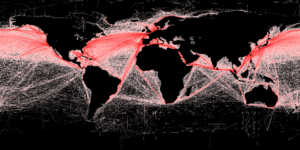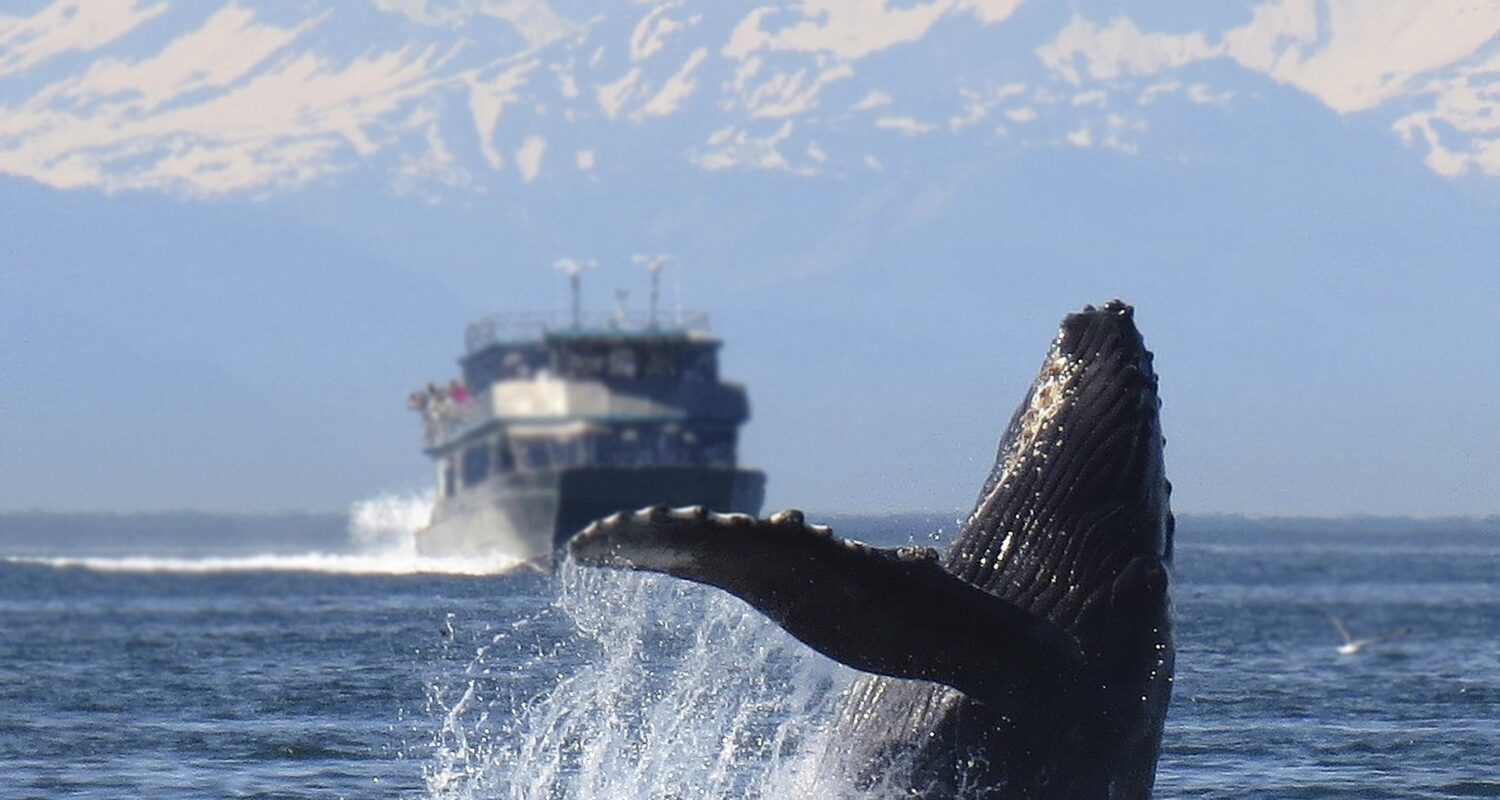Hausner, Arjun, et al. “Dynamic strategies offer potential to reduce lethal ship collisions with large whales under changing climate conditions.” Marine Policy 130 (2021): 104565. https://doi.org/10.1016/j.marpol.2021.104565
In recent years, global freight shipping rates reached an all-time high, and there is growing concern for how marine ecosystems will fare in the face of increasing human impacts. With the global shipping rates expected to triple by 2050, it is vital for managers, stakeholders and scientists to come up with collaborative solutions to protect both marine ecosystems and economic interests. Dynamic Ocean Management (DOM) is a relatively new and promising framework for minimizing the tradeoffs between the environment and economic use of the ocean.

In this new study, scientists explore how DOM can be used to minimize instances of ship strikes of blue whales. Blue whales are one of the most widely distributed whales on Earth but are on the endangered species list. According to the study, “the years of 2018 and 2019 saw the highest number of lethal ship strikes to whales on record in the western USA.” In order to better protect whales and still allow for the economic use of the oceans, the authors propose two DOM methods that target the speed of ships and the seasonality of shipping routes. The scientists tested these strategies in the Southern California Bight over the course of 17 years.
Strategizing and Shipping:
The first strategy focuses on a daily management strategy. Most regulations by BSEE and BOEM, the two main ocean regulation agencies in the US, center around reducing vessel speed or shutting down the engine when a whale is observed within a certain distance of the vessel. However, this strategy usually fails to work when whales are not observed (either visually or acoustically) when monitoring the area, even though they may be present. The daily strategy uses a model that analyzes large-scale regional datasets (like temperature, currents, or other environmental conditions) to predict blue whale habitat suitability and then recommends a decrease in vessel speed depending on the likelihood of blue whales being present. Since the model updates daily with new information about the environmental conditions, the speed restrictions could be enforced one day and removed the next. The second solution is a fixed management strategy that operates based on whale migration patterns. In the Southern California Bight, where the study took place, a speed restriction was incentivized from July 1 – November 30 each year. This time was chosen because it is most likely to be when whales are migrating through the area.

Do the strategies work?
In order to assess which strategy was best suited for reducing ship strikes, the scientists divided the number of whales observed when the strategies were in effect by the number of days that the strategy was in effect. While both strategies worked, they found that the daily strategy was much more effective than the fixed strategy, with the daily strategy resulting in increased protection and fewer days that the speed reductions were recommended. The authors consider this a win, since it does a great job of minimizing the tradeoffs between economic costs of slower shipping speeds and the environmental protection of blue whales.
Overall, the authors estimate a 10% increase in the protection of blue whales should these strategies be enforced more strictly and more widely in the Pacific. While the Southern California Bight is a hotspot for blue whale activity, the authors warn that wider implementation could be difficult both technologically and politically. They suggest flipping between a fixed and daily strategy depending on the feasibility and the infrastructure but advocate that one of these DOM strategies is better than none at all.
I recently graduated with a degree in Environmental Earth Science and Sustainability from Miami University of Ohio, and I recently started my MSc at the University of Victoria. While my undergraduate research focused on biogeochemical cycles in lakes and streams, I am excited to pursue my MSc in the El-Sabaawi Lab and explore how urbanization might impact fisheries. In my free time, I love to travel to somewhere off the beaten path, read fantasy novels, try new recipes, and plan my next trip to the ocean.

